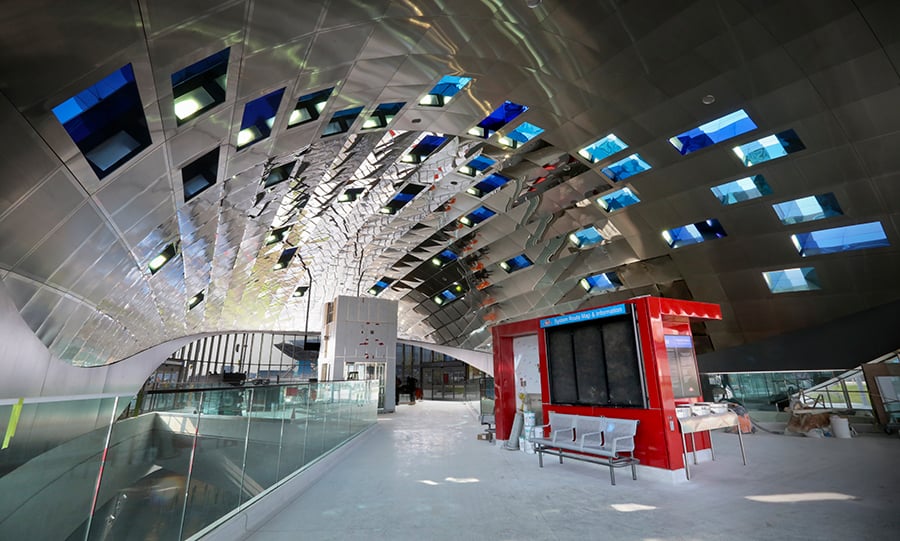
May 28, 2018
Toronto Pairs Artists with Architects to Enliven Six New Subway Stations
While the artworks at each stop diverge in scale and approach, they are united by an effort to inject a sense of arrival into the slog of the daily commute.

Since 2008, residents of Toronto’s more transit-starved neighborhoods have eagerly awaited the opening of the Toronto–York Spadina Subway Extension. The recently completed project adds six stations and over five miles to the crucial line, linking multiple points of the city’s core with previously hard-to-reach locations in the northern suburbs like Vaughan Metropolitan Centre and Highway 407. In a part of this project, the Toronto Transit Commission (TTC) contracted the production of permanent public artworks to greet commuters at each stop. Six international artists were paired with architects early in the design development, resulting in what Brad Golden, the TTC’s public art consultant, calls “art and architecture seamlessly integrated.”
According to Golden, the architectural mandate at the new stations included a “penetration of light.” Each artist approached this challenge differently. Paul Raff Studio, the firm charged with designing the art for Vaughan Metro Station, interpreted it literally: Riding the escalator up from the platform, the commuter is confronted with a cascade of light that pours in through a domed ceiling with reflective panels. Artist David Pearl created silk-screen-printed enamels at Highway 407 that infuse the entire station with colored light, changing with the sun’s passage. Meanwhile, Realities United, the German duo matched with Pioneer Village Station, took a more conceptual approach. In a nod to open and democratized communication, passengers can submit phrases at platform-mounted terminals, which feed the messaging into the station’s overhead lighting display.
Under the TTC’s mandate that 1 percent of construction costs be allocated to public art, each station was budgeted approximately Can$500,000 for its project. While the artworks at each stop diverge in scale and approach, they are united by an effort to inject a sense of arrival into the slog of the daily commute.
You may also enjoy “Legendary Musicians Ryuichi Sakamoto and Alva Noto Reflect On Using Philip Johnson’s Glass House As An Instrument.”










